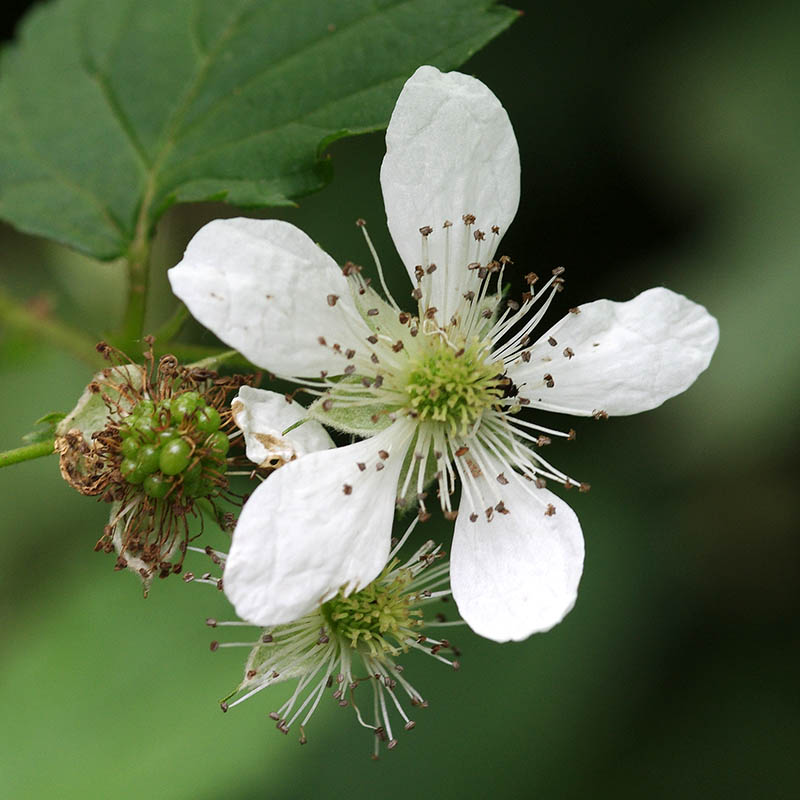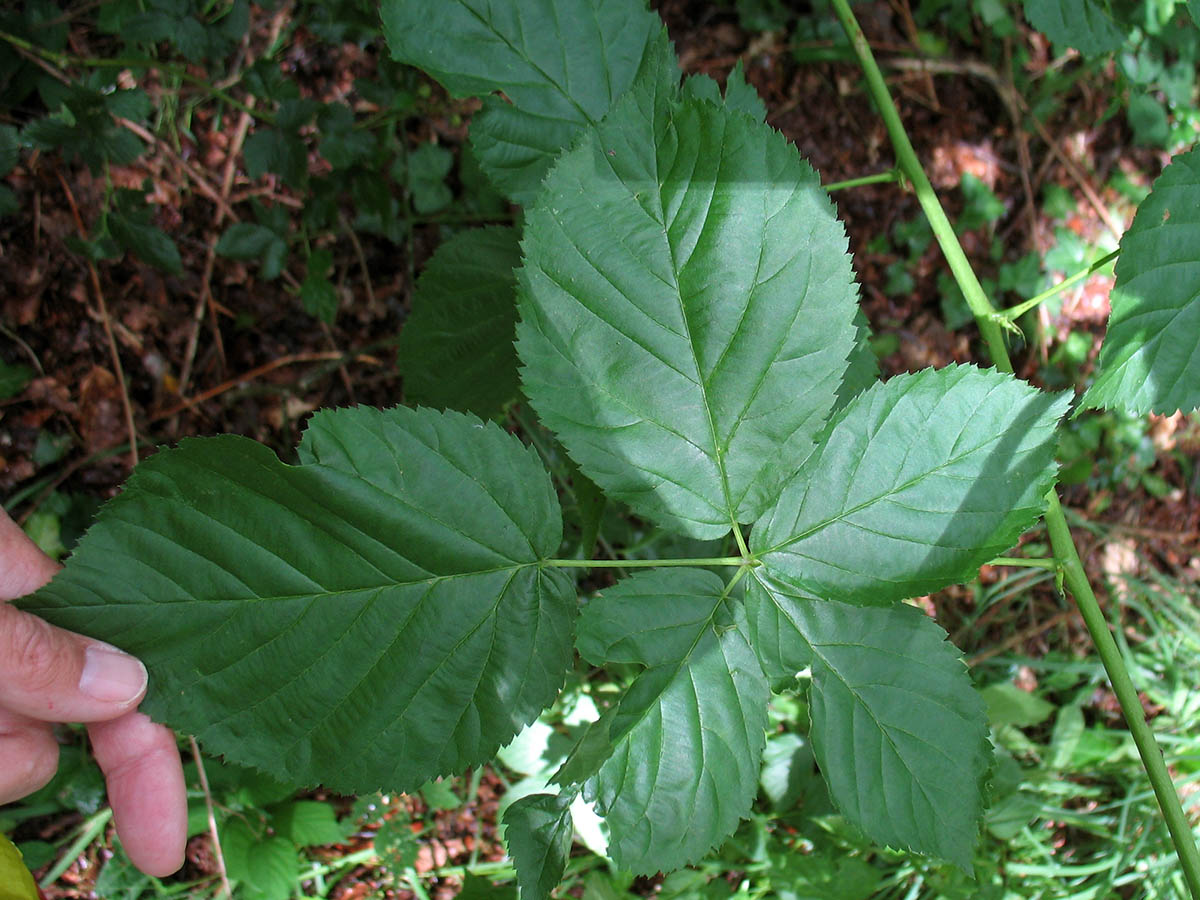
Rubus nessensis – Section Rubus
back to Alphabetical index · Taxonomic index
A widespread British and European bramble and the first to be described here in 1794. It is one of the more raspberry-like species sending up tall suckering canes, though the leaves are green both sides. It can be recognised by its white petals, largely unarmed stems with a few tiny black prickles, large leaves and red fruit. It occurs in damp, semi-natural acidic woodlands and heathland margins both in the uplands and lowlands.

The plant sends up tall, relatively thin stems, which typically reach well over 2 metres. These bear small clusters of fruits on long peduncles.

Flowers are about 2.5cm in diameter with elliptical petals up to 15 x 10 mm but often smaller. The stamens are longer than the styles and spread outwards strongly after flowering.

Ripe berries are characteristically dark red in this species and are small, formed of relatively few drupelets. The sepals are white-bordered with a medium-long finely-pointed tip. They are silvery-hairy inside and mainly point outwards when the plant is in flower or curl upwards slightly as the fruit forms. Like several related species it is an early flowerer and fruiter. This photo was taken on 20th July in southern England.

The terminal leaflet is typically 10cm long but often longer, thin, usually completely glabrous above and thinly pubescent below, evenly and rather finely serrate. The colour is mid-green above and only slightly paler below. The terminal leaflet may be ovate, broadly elliptical or slightly obovate in shape with a shallowly cordate base and relatively long acuminate apex. Leaflets are usually 5, but vary from 3-7.




The stem is typically smooth and shining, slender, only slightly angled. It is usually green but can turn brown or dark purple if exposed to the sun. The prickles are short and slender, patent to declining, typically a dark purplish-brown in colour. They are widely spaced and can be absent from long sections of the stem. There are no stalked glands or acicles, but usually numerous minute dark sessile glands.


